Born in 1892 on a farm in Mississippi, Pierce would settle in Colombus, Ohio, where he ran a barbershop that also served as his studio. His uncle taught him to carve as a child, but it wasn’t until he carved his first animal as a gift for his first wife, Cornelia, in the 1920s, that he began to really explore his talents. From that one animal, he created a zoo, each creature representing a story from the bible, a parable, or a moment from his life.
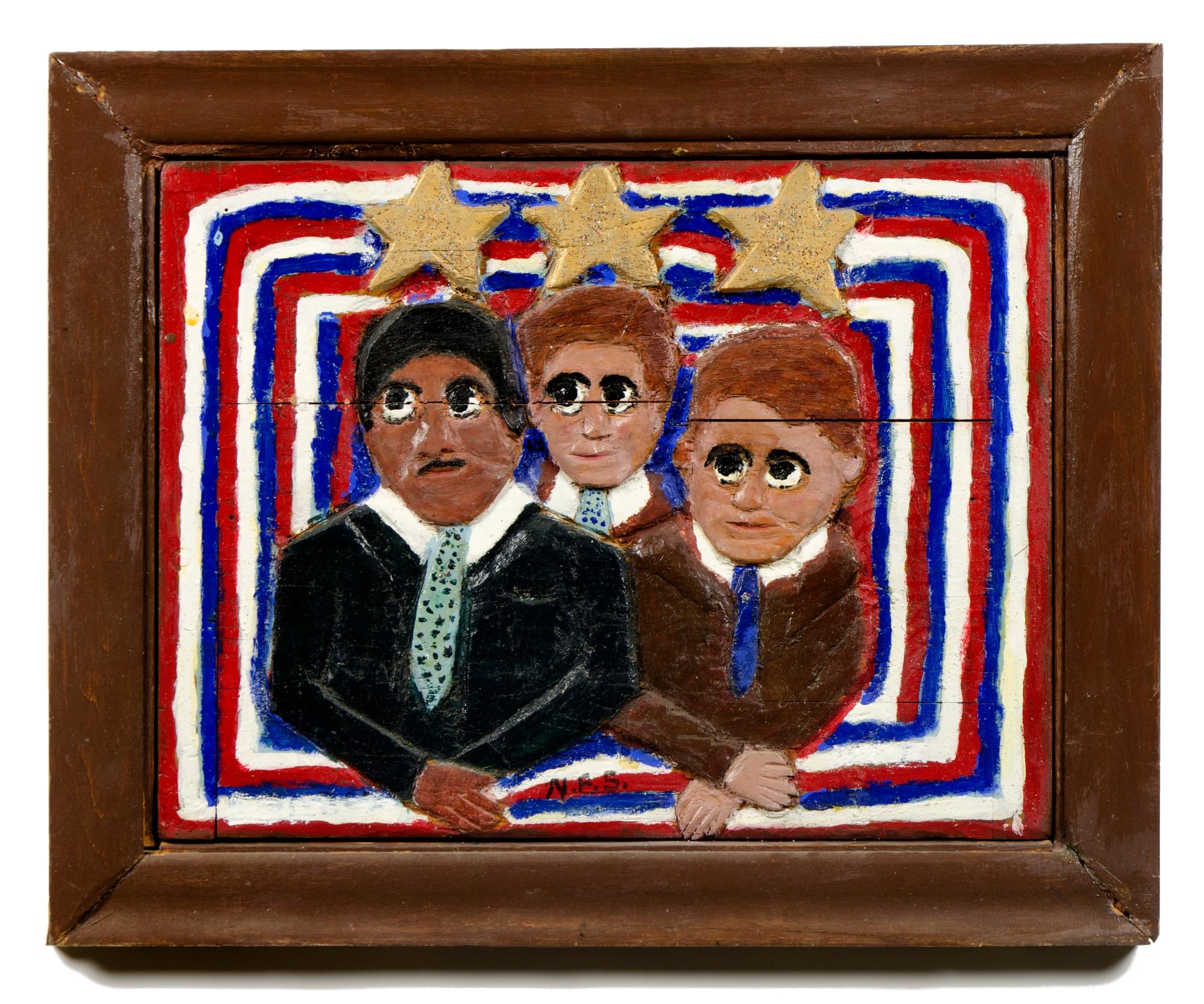
Elijah Pierce, Martin Luther King Jr. and the Kennedy Brothers, 1977. Paint and glitter on carved wood.
Thirty-six years after his death, Elijah Pierce is receiving more acclaim than ever. With a current exhibition at the Barnes Foundation in Philadelphia and an accompanying catalogue, there is now wide-spread recognition of Pierce’s place as a great American artist and major outsider artist. Elijah Pierce’s America, on view through January 10, 2021, brings together more than a hundred of his works created over a fifty-year period.
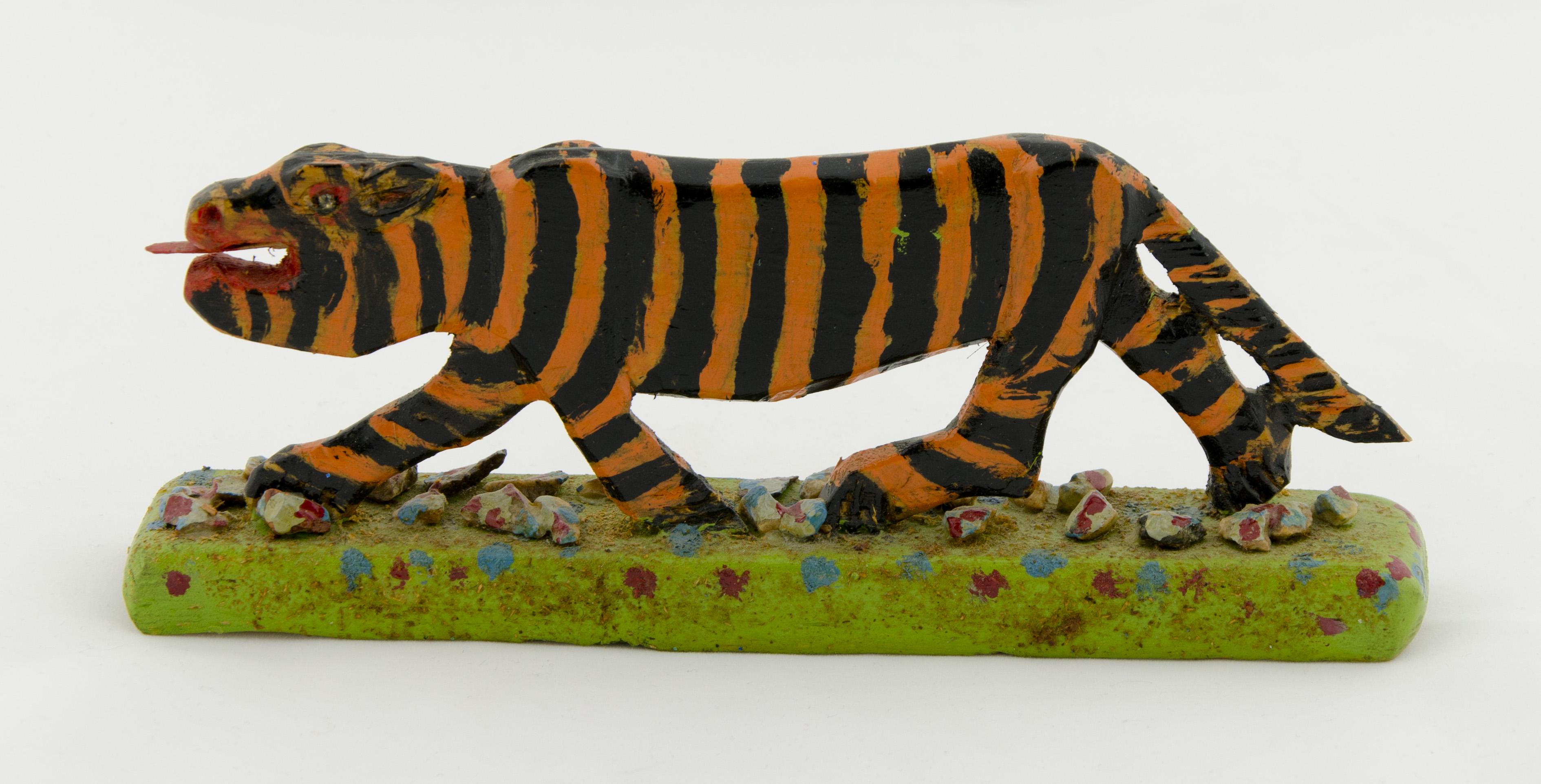
Elijah Pierce, Tiger, 1972. Paint and rhinestones on carved wood.
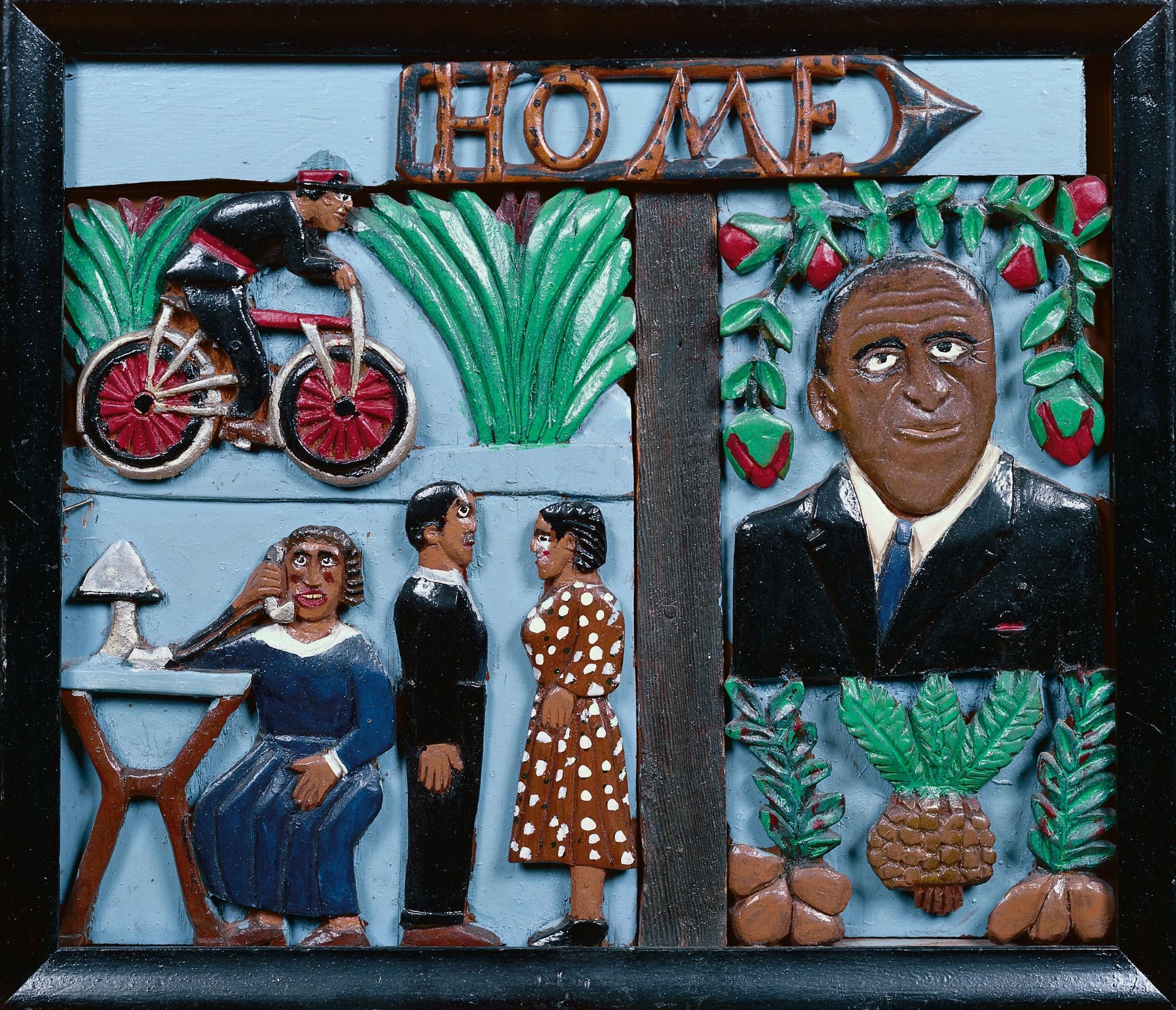
Elijah Pierce, Three Ways to Send a Message: Telephone, Telegram, Tell-a-Woman, c. 1941. Paint on carved wood.
From there, Pierce began a prolific career. Creating free-standing sculptures and bas-relief panels in wood, Pierce crafted hundreds of works depicting biblical stories and reflecting the times he lived in.
His own personal favorite, and his best-known work, is The Book of Wood (1932), a seven-panel series in painted wood depicting biblical scenes. In addition to his successful career as a barber, Pierce was called to the ministry and served as a preacher for years, a story he told in autobiographical works.
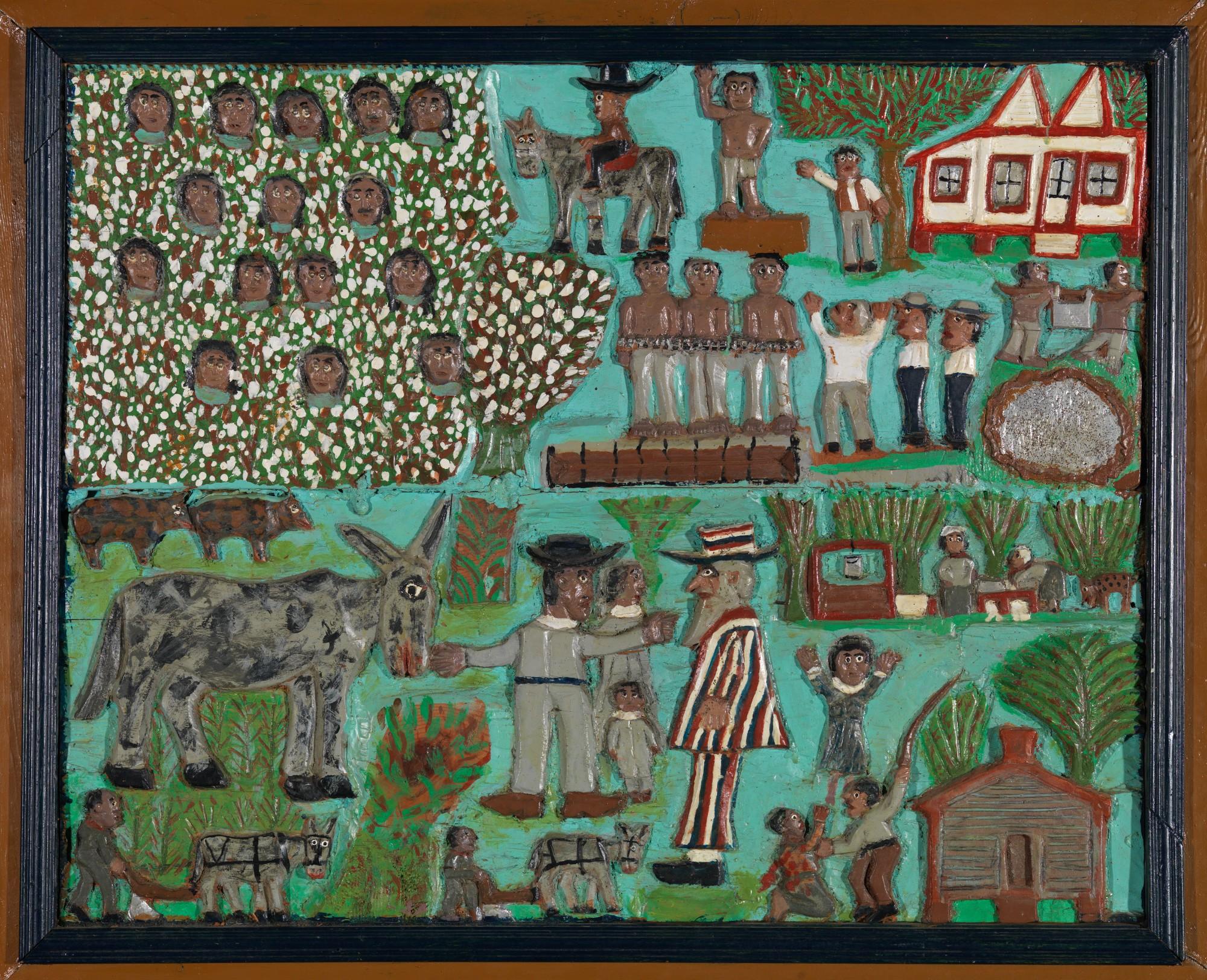
Elijah Pierce, Slavery Time, c. 1965–70. Paint, glitter, and pearl on carved wood.
Pierce’s works reflect the massive changes the country and world underwent during his lifetime. Born the child of a formerly enslaved man, Pierce witnessed and documented major cultural shifts, including the Civil Rights Movement, and his body of work tells those stories in vibrant colors and carefully crafted vignettes.
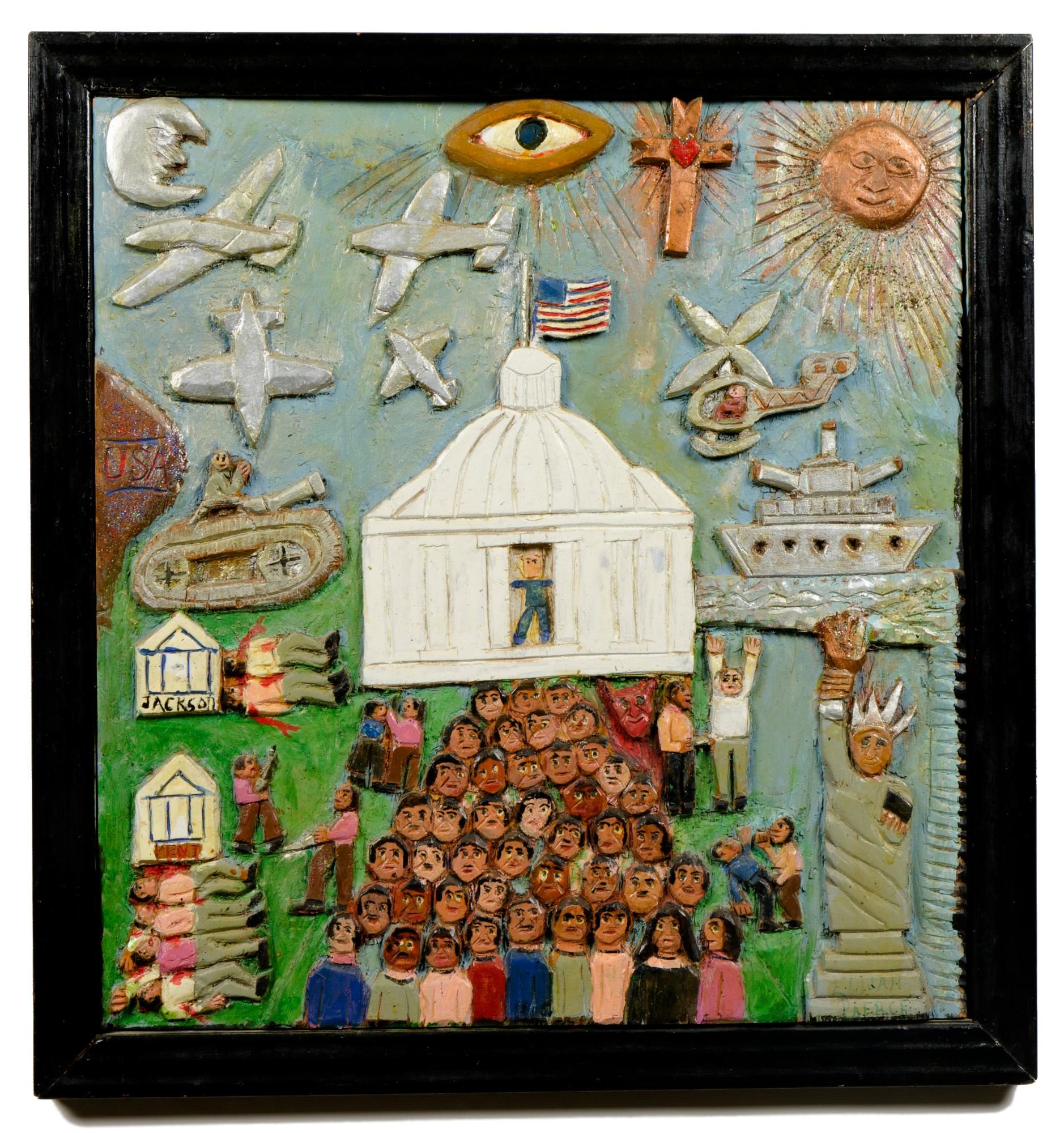
Elijah Pierce, Watergate, c. 1975. Paint and glitter on carved wood.
Though for much of his artistic career Pierce worked in obscurity, he began to gain recognition in the last decades of his life. In 1982, just two years before his death, he received a National Heritage Fellowship from the National Endowment for the Arts, their highest honor in the folk and traditional arts.
As the work of self-taught artists is no longer relegated to the fringes of the art world, Pierce's works are in higher demand and can now be found in major museums across the country. Elijah Pierce's America is a testament not only to the power of his compositions but also to his role as one of the greatest woodcarvers this country has ever known.

















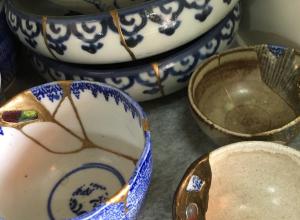







![DEl Kathryn Barton [Australian b. 1972] the more than human love , 2025 Acrylic on French linen 78 3/4 x 137 3/4 inches 200 x 350 cm Framed dimensions: 79 7/8 x 139 inches 203 x 353 cm](/sites/default/files/styles/image_5_column/public/ab15211bartonthe-more-human-lovelg.jpg?itok=wW_Qrve3)
